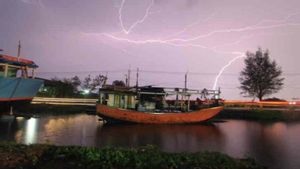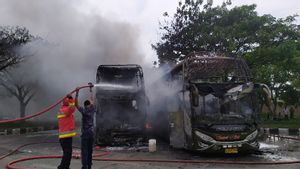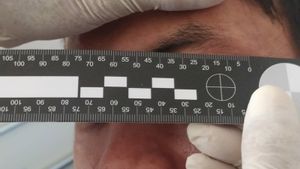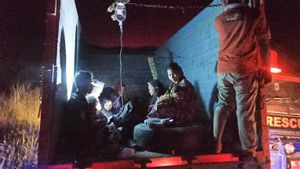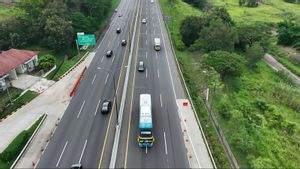ACEH - The Meteorology, Climatology and Geophysics Agency (BMKG) Coordinator for Earthquake and Mitigation (BMKG), Daryono, rebutted the cause of the 2004 Aceh Tsunami. Tsunamis were triggered by tectonic earthquakes, not nuclear weapons engineering, as a viral discussion on social media some time ago.
"The scientific evidence is very strong that the Aceh Tsunami was triggered by a tectonic earthquake, not triggered by a nuclear explosion as is the rumor that is circulating," said Daryono in Jakarta as quoted by Antara, Monday, March 22.
He explained that the evidence, namely the recorded data of ground vibrations in a seismogram, shows a recorded body wave in the form of a P (Pressure) wave which was recorded to arrive earlier than the S (Shear) wave that came next, which was then followed by a surface wave.
The appearance of these body wave phases is strong evidence that the Aceh earthquake and tsunami were triggered by tectonic activity, not a nuclear explosion.
The appearance of strong S (Shear) waves on the seismogram indicates that the deformation that occurs in the Indian Ocean west of Aceh is a shearing process that occurs suddenly in the earth's crust due to rock fractures in the tectonic earthquake process, not due to a nuclear explosion.
Deformation of the seabed in the Indian Ocean west of Aceh on 26 December 2004 was a tectonic earthquake as evidenced by variations in the initial form of P waves in the form of compression (up) and dilation (down) movements on seismograms recorded at the Meteorology, Climatology and Geophysics Agency (BMKG) seismic stations.
SEE ALSO:
If the source is a nuclear explosion, then all seismogram records at various seismic stations are preceded by an upward motion (compression) of the P wave.
The tectonic earthquake that triggered the 2004 Aceh Tsunami did not occur suddenly but through the process of an opening earthquake (foreshocks) that had appeared since 2002, during the Simeulue Earthquake with a magnitude of 7.0 on November 2, 2002.
Since then there has been a series of small earthquakes that have continually occurred which are preliminary earthquakes until the climax of a 9.2 magnitude earthquake occurred on December 26, 2004, at 08.58.53 western Indonesia time.
The foreshocks phenomenon that has occurred two years earlier is strong evidence that the 2004 Aceh Earthquake was not triggered by a nuclear explosion, but a tectonic earthquake with the 2004 Aceh Earthquake type forming fracture lines (rupture) along the subduction zone (line source) from the side west of Aceh in the south to the Andaman-Nicobar Islands in the north about 1500 km.
"This is evidence that tectonic earthquake fractures occurred in the Aceh-Andaman Megathrust segment. The long fractures that formed along the plate subduction pathway are evidence that the deformation of the seabed was not caused by a nuclear explosion," he said.
If it is a nuclear explosion, the deformation is formed centrally at one point (point source) and not in the form of a line (line source).
In addition, evidence that the devastating earthquake in Aceh 2004 was triggered by tectonic earthquakes is the emergence of a large series of aftershocks along the Megathrust Andaman-Nicobar route following the main earthquake.
If a tsunami were triggered by a nuclear explosion then no record of very many aftershocks would have occurred more than a year later. If the tsunami was triggered by a nuclear explosion, there would be no record of the aftershocks for a very long period.
Regarding the changes in the magnitude and epicenter position of the 2004 Aceh earthquake, it is common in the analysis to determine earthquake parameters. Changes in earthquake parameters occurred due to data updating due to increased seismic data that was entered and used for analysis by officers at the earthquake monitoring agency.
The more earthquake data is used, the more stable and accurate the earthquake parameter results will be until the final result is obtained. Likewise, the change in the epicenter of the 2006 Aceh Earthquake was caused by a gradual fracture process in the earthquake's axis and occurred in an area extending from west Aceh to the Andaman-Nicobar Islands.
The English, Chinese, Japanese, Arabic, and French versions are automatically generated by the AI. So there may still be inaccuracies in translating, please always see Indonesian as our main language. (system supported by DigitalSiber.id)




